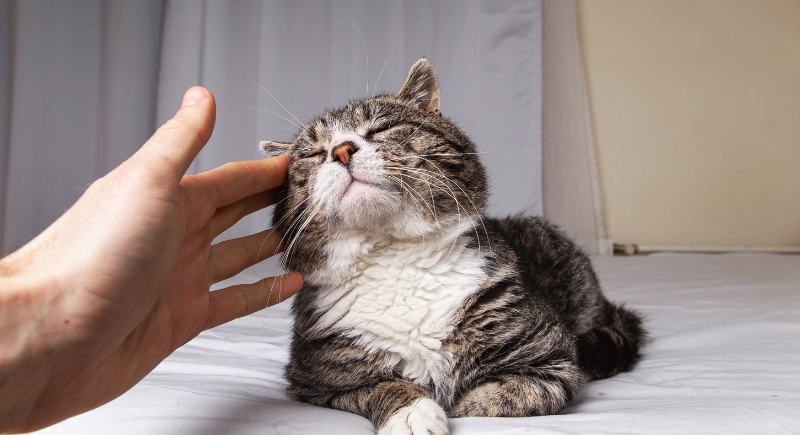What Happens in a Cat’s Final Moments Is Both Sad and Beautiful
People tend to approach the topic of death with tension and hesitation. The uncertainty around it pulls the mind in every direction, and it’s common to worry, analyze, and picture outcomes. It’s a human pattern that makes heavy emotions overshadow what the final stage actually looks like.
Cats handle death with far less internal conflict. Their bodies slow at a steady pace, and they respond to the changes with calm, steady behavior that reflects comfort more than distress. The contrast between human anxiety and a cat’s acceptance often makes it difficult to recognize the signs as they build slowly because the atmosphere remains softer than expected.
All owners need to understand how cats approach the end of their lives and why those final hours often appear peaceful rather than chaotic.
How Cats Start To Slow Down

Image via Getty Images/vladans
Cats don’t follow a single exact path, but many show early hints that their bodies are shifting. Their energy usually drops, and daily routines matter less to them. Eating becomes irregular, and they sleep for longer stretches of time.
These signs can resemble normal aging, but the pattern becomes clearer once you know what to look out for. For example, their need for low stimulation grows. Many rest in corners or on soft spots where they’ve always felt safe. Some reach for the people they trust instead of retreating. Both behaviors align with what veterinarians see as their bodies begin to work harder to maintain basic functions.
However, there’s a difference between typical laziness and a deeper kind of fatigue. Veterinarians often point to weight loss, reduced grooming, and cooler body temperature as indicators that a cat’s body is working harder to maintain stability.
These changes usually develop at a slow pace, which is why paying attention early helps you recognize when a new stage has begun rather than mistaking it for a temporary dip.
When Decline Becomes Obvious
As strength fades, mobility becomes more challenging. A cat that once jumped with ease may hesitate or avoid heights entirely. Walking may look unsteady or slower. Drinking patterns can shift, and breathing may become heavier or uneven.
The emotional shift during this time can be equally significant. A cat that preferred independence might seek longer contact, and one that usually wanted constant attention may settle into longer periods alone. This is also when many owners and veterinarians talk about comfort-focused care. Pain medication, warm bedding, soft meals, and easy access to essentials all support this period. Small changes at home can reduce strain.
The Final Moments And What They Look Like

Image via Getty Images/Aleksandr Zotov
During the last stretch, cats usually drift into deep rest. Breathing slows. Eyes may stay partly open. Paws and ears feel cooler as circulation changes. Some remain responsive to touch, while others settle into stillness.
The moment itself tends to be calm. Vets often describe a natural shutdown where muscles release tension and breathing tapers off. It may look sudden to a human watching closely, but the cat experiences a quiet easing out of effort.
Watching a companion reach the end of their time with you is hard, even when you understand the process. Yet there is beauty in how grounded those final seconds can be.
Cats still recognize familiar voices and familiar scents, even if they can’t move much as they decline. Many appear more settled when a hand rests beside them or a soft blanket touches their side. Nothing dramatic happens. They leave the world with the same comfort they sought throughout life.
How To Create Comfort In The Last Hours
Soft bedding and a warm, calm resting space can make the biggest difference. Most cats rest better with dim lighting and minimal disruptions. Keeping food, water, and the litter box nearby reduces the effort required to move.
Light grooming at this stage supports comfort. A soft cloth around the eyes or a gentle brush can help maintain cleanliness. You can offer small servings of preferred foods, though a declining appetite is normal and not something to push against.
Some people rely on palliative guidance through their veterinarian. Medication for pain, hydration support, and end-of-life planning help a cat stay comfortable. When suffering outweighs comfort, euthanasia becomes an option many choose because it provides a fast, controlled, and painless passing.
Processing Your Cat’s Final Days

Image via Getty Images/stocknshares
The emotional aftermath often feels heavier than expected because the physical decline is usually steady and understated. Many owners look back and question signs, unsure if they misread something or waited too long. It’s common to react that way, but it doesnt mean you made a mistake in caring for your pet.
Talking with family, writing down memories, or keeping a small memento can make the experience easier to process. After a loss, some save a collar, others create a small photo spot at home. Any approach is valid as long as it gives you space to acknowledge the loss.
The last chapter with a pet tends to stay vivid, which makes understanding the process a grounding part of saying goodbye.